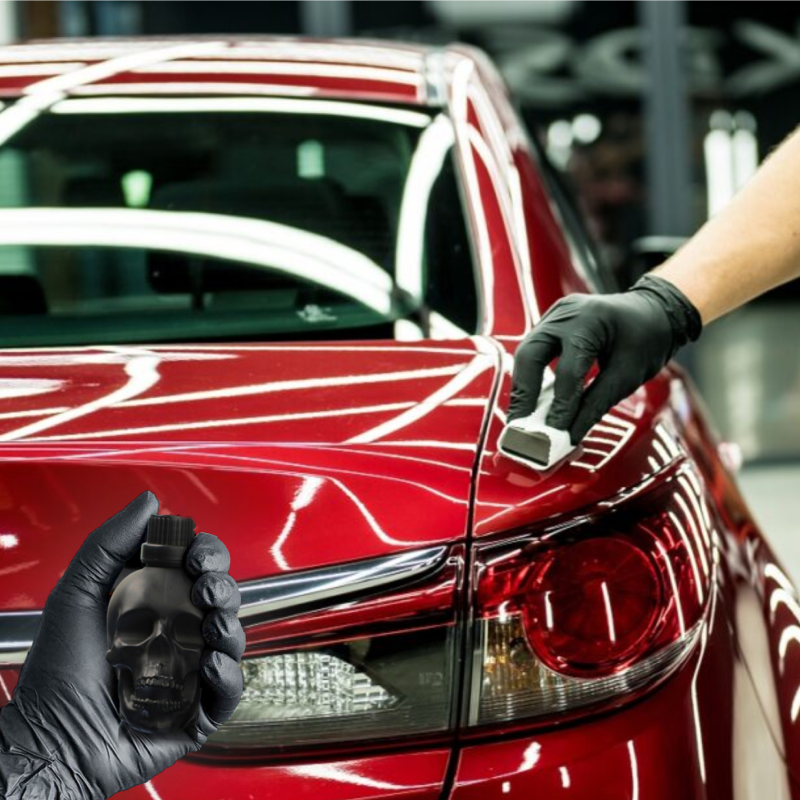Find affordable paint protection film solutions for long-term car care.
Wiki Article
A Comprehensive Overview to the Kinds of Ceramic Finish on the Market
Ceramic coatings have arised as an essential option across various industries due to their one-of-a-kind buildings and applications. As we discover the distinctive qualities and applications of these finishings, the ramifications for efficiency and longevity come to be increasingly apparent, raising inquiries concerning which type may finest suit your demands.Comprehending Ceramic Coatings
Ceramic layers are advanced safety remedies that have actually gotten popularity in numerous markets, specifically in auto and aerospace applications. These layers include a liquid polymer that, when healed, develops a resilient, hydrophobic layer externally of the substratum. This layer provides improved resistance to ecological contaminants, UV radiation, and chemical exposure, therefore expanding the life and aesthetic appeal of the underlying product.The essential part of ceramic finishes is silica, which adds to their solidity and toughness. The application process usually involves surface area preparation, application of the covering, and curing, which can be attained via warm or UV light. Once cured, ceramic coatings display remarkable bonding properties, permitting them to adhere highly to a range of surfaces, consisting of steels, plastics, and glass.
In enhancement to their safety attributes, ceramic layers likewise use convenience of maintenance. Their hydrophobic nature lowers the adherence of dirt and grime, making cleaning simpler and less frequent. On the whole, the adoption of ceramic coatings stands for a substantial advancement in surface security innovation, offering both functional and visual benefits throughout multiple industries.
Types of Ceramic Coatings
Numerous kinds of ceramic layers are available, each created to meet specific performance needs and applications - Auto Detailing. One of the most usual kinds consist of:Silica-based Coatings: These layers primarily contain silicon dioxide and are understood for their sturdiness and chemical resistance. They are widely made use of in automotive and commercial applications.
Titanium Dioxide Coatings: Prominent for their photocatalytic residential or commercial properties, titanium dioxide coverings are commonly used in environments where self-cleaning and antifungal buildings are desirable, such as in building products and automotive surfaces.
Zirconia Coatings: Characterized by their high-temperature stability and thermal resistance, zirconia layers are used in applications such as turbine engines and high-performance automobile components.
Alumina Coatings: Showing superb firmness and thermal stability, alumina coverings are frequently utilized in wear-resistant applications, consisting of reducing tools and industrial machinery. - Paint Protection Film
Hybrid Coatings: Incorporating the residential or commercial properties of numerous materials, crossbreed finishings supply enhanced performance features, making them appropriate for one-of-a-kind and requiring applications.
Each kind of ceramic finish serves unique functions, permitting users to select the most ideal option based upon details ecological conditions and performance needs.
Advantages of Ceramic Coatings
Ceramic coatings, in specific, deal countless advantages that make them increasingly preferred amongst suppliers and customers alike. These layers are resistant to scrapes, chemicals, and look what i found UV rays, ensuring that the underlying surface area stays safeguarded over time.Along with sturdiness, ceramic layers provide excellent hydrophobic homes, enabling easy cleaning and maintenance. This water-repellent nature reduces the adherence of dust, gunk, and various other impurities, which can prolong the visual allure and performance of the surface. Ceramic coatings can significantly improve thermal resistance, making them suitable for applications that endure high temperatures.

Application Process
When applying ceramic coverings, a precise method is necessary to accomplish optimal outcomes. The application procedure commonly begins with complete surface area prep work. This includes washing, decontaminating, and brightening the surface area to get rid of all pollutants, including dirt, oil, and prior waxes or sealers. A tidy surface makes sure appropriate attachment of the finishing.When the surface is prepped, the following step is to use the ceramic layer. This can be done making use of an applicator pad or a microfiber fabric, ensuring also insurance coverage. It is critical to work in small areas to preserve control and avoid early healing. The coating ought to be used in slim layers, as thicker applications can bring about irregular coatings.
After application, the finishing requires a specific curing time, generally varying from a couple of hours to a full day, depending upon the item. Throughout this time, it is important to prevent exposure to dampness or impurities. Finally, a gentle buffing might be necessary after curing to enhance the gloss and remove any high spots. Complying with these actions diligently will maximize the performance and long life of the ceramic finish, supplying a durable protective layer for the surface.
Maintenance and Longevity
To ensure the longevity and performance of a ceramic you can check here layer, regular upkeep is important. Ceramic finishings, recognized for their resilience and safety high qualities, require particular treatment routines to maximize their life expectancy and performance. The primary step in upkeep entails routine washing with pH-neutral soap, avoiding extreme chemicals that can break down the covering. It is suggested to clean the car regularly, preferably every 2 weeks, to avoid the build-up of contaminants that can endanger the finish's integrity.Along with routine cleaning, periodic inspections are important. Try to find indicators of wear or damage, such as hydrophobic residential or commercial properties decreasing or surface flaws. If necessary, a light gloss may be put on invigorate the covering without removing it away.
Moreover, the application of a booster spray can enhance the finishing's hydrophobic impacts and restore its gloss. This is specifically valuable for finishes that have been in use for an extensive duration. Eventually, by sticking to these upkeep methods, one can substantially expand the life of a ceramic coating, guaranteeing that it proceeds to offer optimal protection versus environmental aspects and preserve the visual charm of the car.
Final thought

Report this wiki page